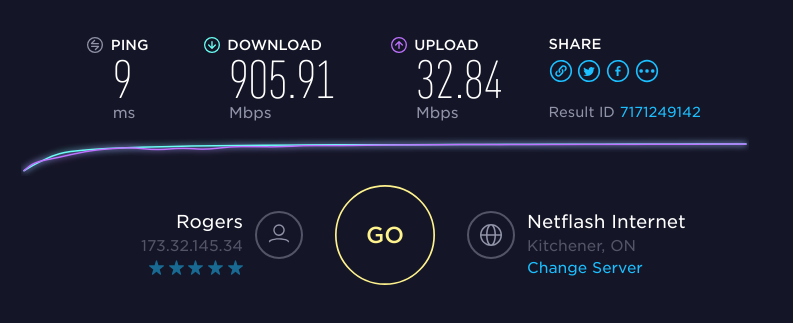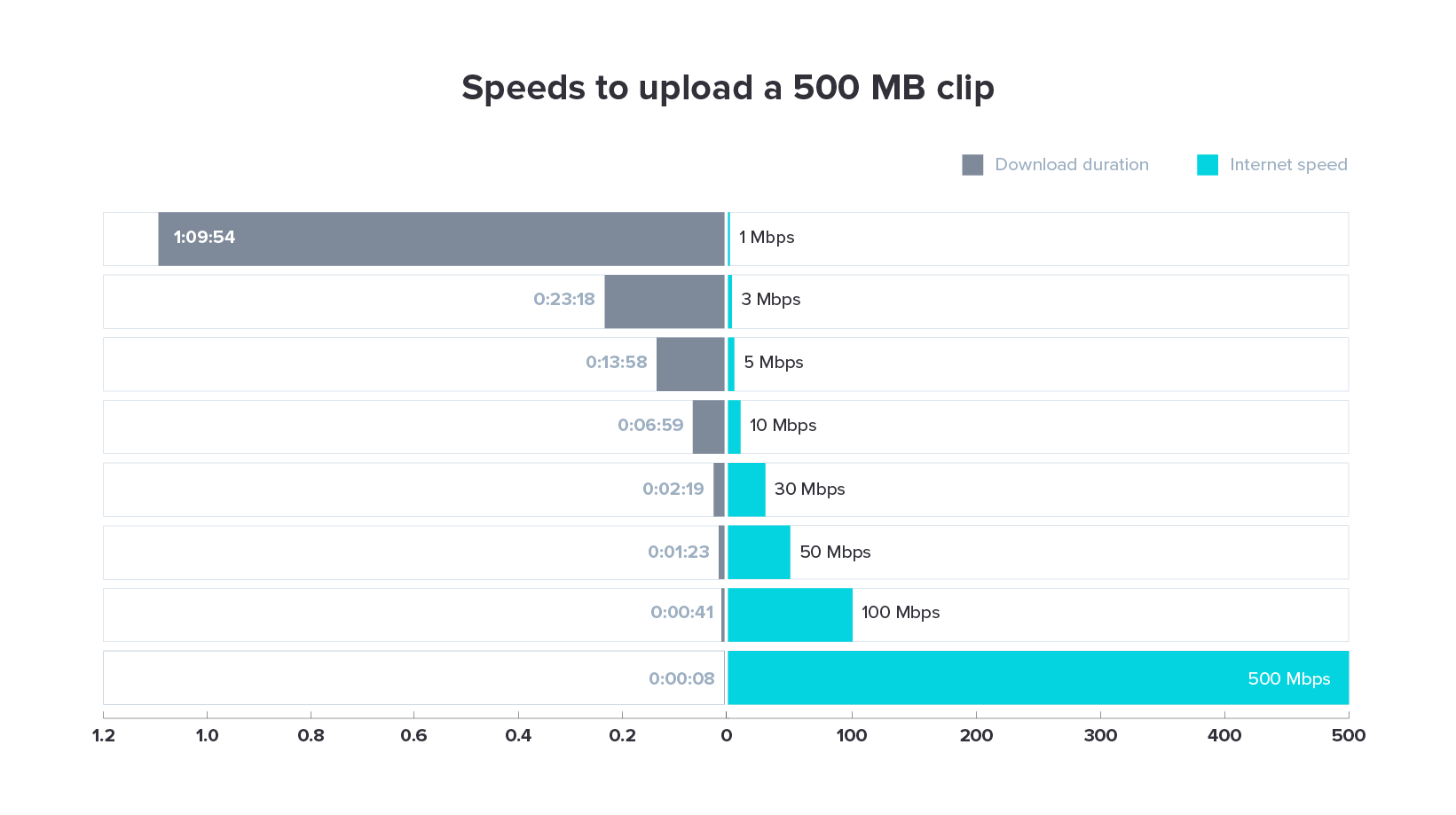The Function of Megabits Per Second in Online Gaming Efficiency
The Function of Megabits Per Second in Online Gaming Efficiency
Blog Article
Just How Megabits Per Second Impact Your Online Activities
The idea of megabits per second (Mbps) plays a crucial function in forming our on-line experiences. Greater Mbps can boost performance and decrease interruptions, while insufficient speeds might foster stress and inefficiency.
Comprehending Megabits Per Second
When considering net rate, it's important to recognize the idea of megabits per second (Mbps), which offers as a basic dimension for data transfer prices. This metric quantifies just how much information can be sent over a net link in one second, giving a clear understanding of efficiency capacities - Megabits Per Second. For context, one megabit is equal to one million little bits, and Mbps is frequently used to express bandwidth for different on-line activities
A higher Mbps suggests a faster internet link, making it possible for individuals to execute tasks such as downloading data, browsing sites, and taking part in on-line pc gaming much more efficiently. As an example, normal surfing calls for around 1-5 Mbps, while streaming high-def video clip might demand 5-25 Mbps. Recognizing these needs is important for figuring out the suitable internet rate needed for particular tasks.
Additionally, the variety of gadgets attached to a network can affect total performance. Multiple customers streaming, gaming, or downloading and install at the same time can strain readily available transmission capacity, leading to slower rates - Megabits Per Second. Examining personal online practices and requirements is important in picking a net strategy that aligns with one's requirements, guaranteeing a smooth digital experience
Streaming and Buffering Issues
Streaming high-def content has actually become a staple of modern-day on the internet amusement, yet it is frequently come with by discouraging buffering problems. These disturbances can significantly interfere with the seeing experience, causing dissatisfaction and potential loss of audience engagement. Buffering takes place when the data transferred from the streaming solution is not obtained promptly enough to keep a smooth playback, usually because of insufficient web rate measured in megabits per second (Mbps)

Furthermore, real-time streaming can be affected by network congestion, which occurs when multiple tools share the very same transmission capacity. As a result, optimizing connection rate and ensuring sufficient Mbps is important for a seamless streaming experience. As streaming services remain to advance, recognizing the influence of Mbps on buffering problems remains important for consumers seeking continuous amusement.
Online Video Gaming Efficiency
The impact of internet speed on online tasks extends beyond streaming, substantially influencing on-line pc gaming efficiency. In competitive pc gaming, reduced latency and high data transfer are crucial for a smooth experience. A rapid link lessens lag, allowing gamers to react quickly to in-game events, which can be the difference in between triumph and defeat.
Data transfer, measured in megabits per second (Mbps), plays an essential duty in sustaining several tools and pc gaming systems at the same time. Not enough transmission capacity can cause dropped connections or reduced video game quality, negatively impacting gameplay. On the internet multiplayer games require considerable data transfer, especially throughout peak video gaming hours when many gamers are online.
Hectic first-person shooters demand higher navigate to this site rates to maintain responsiveness, while turn-based method video games might operate fairly well on lower rates. As online pc gaming continues to evolve, with raising visual integrity and even more complex multiplayer environments, the demand for higher Mbps will only increase.
Video Conferencing High Quality
In today's digital landscape, video conferencing high quality is heavily affected by web speed, particularly in regards to bandwidth and latency. Top quality video clip calls require adequate transmission capacity to send sound and video information effortlessly. Commonly, a minimum of 1.5 Mbps upload and download speeds is advised for basic interpretation video clip, while high-definition video conferencing normally demands a minimum of 3 Mbps.
Latency, or the delay in between sending out and obtaining data, additionally plays a critical function in the customer experience. Greater latency can lead to resemble, lag, and disjointed communications, which can prevent collaboration and engagement during conferences.
Moreover, numerous individuals in a video clip meeting can strain readily available data transfer, requiring also higher rates. Network blockage, commonly triggered by synchronised activities like streaming or downloading, can even more degrade video clip top quality. Therefore, for organizations relying on video conferencing for remote cooperation, comprehending the relationship in between megabits per second and general communication high quality is vital for maintaining efficiency and boosting virtual communications.
Choosing the Right Web Plan
Choosing an ideal web plan is important for guaranteeing ideal efficiency in various online activities, particularly in setups that require high transmission capacity, such as video clip conferencing and online video gaming. Megabits Per Second. When thinking about a web plan, it is vital to assess both the speed and data allocation to match your particular usage needs
For households with numerous individuals taking part in synchronised tasks, a plan using higher megabits per second (Mbps) is recommended. Typically, a minimum of 25 Mbps is appropriate for conventional streaming and browsing, while plans surpassing 100 Mbps are more suitable for even more intensive tasks. Furthermore, think about the nature of your online tasks; video conferencing needs at the very least 1.5 Mbps publish speed, while online pc gaming may require a reduced latency however constant link.
Unrestricted information strategies can avoid throttling and interruptions, specifically if heavy usage is expected. By attentively picking a web plan customized to your demands, you can enhance your on-line experience, making certain smooth, undisturbed accessibility to your preferred activities.
Verdict
In conclusion, the importance of megabits per second (Mbps) in shaping on the internet tasks can not be overemphasized. A detailed understanding of specific or family Mbps needs is essential for selecting a proper internet strategy that properly sustains varied online tasks and customer needs.

Usually, a minimum of 25 Mbps is suitable for common streaming and surfing, while strategies surpassing 100 Mbps are better for even more intensive jobs. Furthermore, consider the nature of your online tasks; video conferencing needs at next page least 1.5 Mbps publish rate, while on the internet video gaming might need a reduced latency yet constant connection.
Report this page